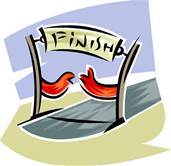Editing - Where to draw the line?
Editing your own work can be an endless task. I think every writer would agree the best option is, after you have proofread your work a few times, to get others to read through it. Initially friends and relatives, if you have them, could be asked for their observations. Thereafter it is undoubtedly preferable to engage the services of a professional. Having said that there are those like me who do not have anyone to ask nor the resources for a professional. So what do we do?
My experience has now shown me there are two elements all writers, whether authoring a book or writing for a magazine, newspaper, blog etc., require: Perseverance and Patience. Naturally determination also features. Writing is not the quick fast occupation many would like it to be.
Once I have completed my second or third draft I find I grow impatient. I want to see the end product there in front of me. However, if we really want the best we can possibly achieve, editing and proofreading must be undertaken. Now for us who will be the only ones to read our manuscripts before publication this is no easy task. Even after the fourth or fifth read I tend to discover errors and new (better I hope) ways of presenting a situation.
So where do we draw the line?
I think most people would agree it is possible to go on ad infinitum with this task. However, we have to draw the line somewhere. Here is what I do:Silently read through at least three times.Change fonts and styles for each read.Read out loud; at least once.Using a different format have a final quiet read of the complete manuscript.In all honesty I am never satisfied with the end product, no matter what it is: book, painting, flower arrangement or whatever. And in some ways I do not think we should be.
 Nevertheless, once I have completed the process as described above I have to make myself stop. By now I hope all obvious errors and plot anomalies have been spotted. But as all writers agree it is rarely possible for us to pick up all our own mistakes. We therefore have to accept, in the absence of a professional editor and proof-reader, some errors are likely to remain. One consolation, if you can call it that, is some professionally published works still contain errors: even books published by one of the big four.
Nevertheless, once I have completed the process as described above I have to make myself stop. By now I hope all obvious errors and plot anomalies have been spotted. But as all writers agree it is rarely possible for us to pick up all our own mistakes. We therefore have to accept, in the absence of a professional editor and proof-reader, some errors are likely to remain. One consolation, if you can call it that, is some professionally published works still contain errors: even books published by one of the big four.
Conclusion
At the start of your writing accept you will have to be patient with yourself. Also determine to persevere no matter what.
Control your impatience. All of us long to see our books/articles/posts in print but we must not jump the gun.
Accept you will have to proofread and edit several times. And then that you may not spot everything.
Do the best you can to ensure your work is as error free as possible.
Overall I find this process does achieve a reasonably good end product.
We should not forget there is the advantage, in self-publishing, if needed, that most of the systems we use allow for updates to be easily and readily made. Therefore, if you do spot an error or two after publication, it is not the end of the world.
My experience has now shown me there are two elements all writers, whether authoring a book or writing for a magazine, newspaper, blog etc., require: Perseverance and Patience. Naturally determination also features. Writing is not the quick fast occupation many would like it to be.
Once I have completed my second or third draft I find I grow impatient. I want to see the end product there in front of me. However, if we really want the best we can possibly achieve, editing and proofreading must be undertaken. Now for us who will be the only ones to read our manuscripts before publication this is no easy task. Even after the fourth or fifth read I tend to discover errors and new (better I hope) ways of presenting a situation.
So where do we draw the line?
I think most people would agree it is possible to go on ad infinitum with this task. However, we have to draw the line somewhere. Here is what I do:Silently read through at least three times.Change fonts and styles for each read.Read out loud; at least once.Using a different format have a final quiet read of the complete manuscript.In all honesty I am never satisfied with the end product, no matter what it is: book, painting, flower arrangement or whatever. And in some ways I do not think we should be.
 Nevertheless, once I have completed the process as described above I have to make myself stop. By now I hope all obvious errors and plot anomalies have been spotted. But as all writers agree it is rarely possible for us to pick up all our own mistakes. We therefore have to accept, in the absence of a professional editor and proof-reader, some errors are likely to remain. One consolation, if you can call it that, is some professionally published works still contain errors: even books published by one of the big four.
Nevertheless, once I have completed the process as described above I have to make myself stop. By now I hope all obvious errors and plot anomalies have been spotted. But as all writers agree it is rarely possible for us to pick up all our own mistakes. We therefore have to accept, in the absence of a professional editor and proof-reader, some errors are likely to remain. One consolation, if you can call it that, is some professionally published works still contain errors: even books published by one of the big four.Conclusion
At the start of your writing accept you will have to be patient with yourself. Also determine to persevere no matter what.
Control your impatience. All of us long to see our books/articles/posts in print but we must not jump the gun.
Accept you will have to proofread and edit several times. And then that you may not spot everything.
Do the best you can to ensure your work is as error free as possible.
Overall I find this process does achieve a reasonably good end product.
We should not forget there is the advantage, in self-publishing, if needed, that most of the systems we use allow for updates to be easily and readily made. Therefore, if you do spot an error or two after publication, it is not the end of the world.
Published on April 25, 2016 05:43
No comments have been added yet.



